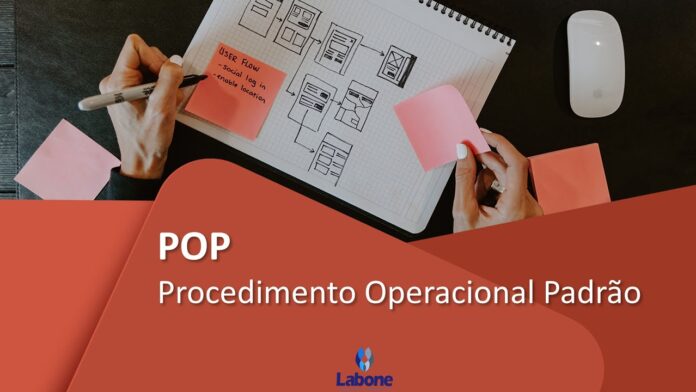Introduction
Operacional Padrão Protocolo or Standard Operating Procedure (SOP) is a good organizational management instrument that provides homogeneity, productivity, and conformity of actions. Establishing and implementing POP in any working environment—health care, manufacturing, business, or public administration—should be embraced to obtain high quality and reduce operation risks.
What is a Protocolo Operacional Padrão (POP)?
A Protocolo Operacional Padrão is an official instruction document specifically written for the purpose of enabling employees to carry out complex or repetitive processes with standardization. An official document made up of process, responsibilities, resources, and desired results.
The purpose of a POP is to:
- Enable productivity and efficiency.
- Enable regulation and quality level adherence.
- Reduce error and risk in process.
- Be utilized as a new employee training guide.
Why Organizations Need POPs
Non-Standard Operating Procedures organizations experience unstable results, fuzzy processes, and nonconformity. POPs are a list of steps that prescribes how all work is to be accomplished.
Major Reasons Why POPs Must Be Instituted
Standardization – Everyone does things the same.
Compliance – POPs establish compliance with law, industry, and safety requirements.
Accountability – Defined functions and roles minimize confusion.
Efficiency – Efficient processes save effort and time.
Continuous Improvement – POPs are living documents and evolve to adapt the evolving organization.
Key Elements of a Protocolo Operacional Padrão
A good POP should at least have the structural elements it is required to have.
1. Title and Identification
All POPs should start with a correct title, identification number, version number, and issue date.
2. Purpose
State the purpose or objective of the POP. For instance, “To effectively sterilize medical equipment in line with safety standards.”
3. Scope
Identify where and to whom the POP extends. It is an open declaration of what its scope is and will not be vague.
4. Duties
Delegate clear roles to personnel.
Every person assigned a duty should know his/her duty and powers.
5. Resources and Materials Needed
List equipment, software, material, or tools required for procedure use.
6. Step-by-Step Procedures
Give a concise, step-by-step account of each phase in a series of order, precision, and clearness.
7. Safety and Compliance Standards
Emphasize risk, safety procedure, and legal requirement to prevent violation or accident.
8. References and Documentation
Position regulatory documents, guides, and references to confirm the POP.
9. Approval and Review
The management shall review and approve all POPs prior to implementation.
Best Practice in Writing an Effective POP
A Protocolo Padrão Operacional must be written in plain, clear language.
Use Clear and Concise Language – No jargon or obscurity.
Give a Reasonable Sequence – Procedures should be steps in step-by-step order.
Make it Legible – Keep POPs computerized so they are readily accessible.
Use Visual Aids – Use flowcharts and diagrams in understanding.
Test the Procedure – Test for workability prior to formal approval.
Keep It Current – Update and keep current as and when organizational change is made.
Types of Standard Operating Procedures (POPs)
Depending on organizational and industry requirements, POPs can be tone and usage variant.
1. Technical POPs
Utilized in the laboratory, factory, and health care to describe highly technical operations.
2. Administrative POPs
Deal with office procedures, HR policy, and finance procedures.
3. Safety POPs
Focus on workplace safety, emergency response, and regulatory compliance at the workplace.
4. Quality Control POPs
Ensure products and services are of the quality required on a day-to-day basis.
POP in the Healthcare and Clinical Environment
Protocolo Operacional Padrão plays a major role in the medical profession. Hospitals, clinics, and laboratories depend on POPs to:
Ensure patients’ safety.
- Use the correct diagnostic protocols.
- Standardize infection prevention protocols.
- Meet international standards of health.
Examples are POP for hand washing, sterilization protocols, patient identification, and drug administration.
POP in Business and Administration
At the workplace, POPs define process effectiveness in operations like:
Human Resources (employee recruitment, hiring, payroll).
Finance (expense approvals, expense report).
Customer Service (service delivery, complaint handling).
Operations (procurement, supply chain, logistics).
Advantages of Having POPs
Effectively designed POPs implementation yields measurable benefits:
Quality Assurance – All done at the same level of quality.
Risk Reduction – Avoids and reduces errors.
Training Efficiency – New employees learn faster with fewer managers.
Operational Transparency – Ensures traceability and accountability.
Better Communication – Everyone knows his/her role and action.
Challenges in Implementing POPs
Companies cannot implement POPs regardless of their benefits.
Resistance to Change – Workers oppose new processes.
Over-Complexity – Too much information prevents compliance with POPs.
Old Documentation – Inadequate accurate revision of POPs makes it obsolete.
Poor Communication – Lack of good training overpowers successful implementation.
Steps to Implement a POP Successfully
- Assessing Organizational Needs – Look for process areas where procedures should be rationalized.
- Stakeholder Participation – Involve employees during documentation.
- Developing Draft POPs – Make them simple and testable steps.
- Pilot Test – Pilot testing on a small scale to detect gaps.
- Authorization and Training – Ensure that the management authorized and the employees were trained.
- Monitor and Review – Check from time to time and modify procedures.
PERIODIC IMPROVEMENT OF POPs
An Operacional Padrão Protocol is never fixed; it evolves as the company expands. Check on it from time to time, consider employees, and amend procedures using new technology and legislations.
Version tracking, approvals, and amendment POP management systems should be part of organizations.
Conclusion
Protocolo Operacional Padrão (POP) is a useful tool for any organization looking for effectiveness, compliance, and excellence. Writing down and standardizing procedures, POPs bring consistency, risk minimization, and environmentally friendly.
